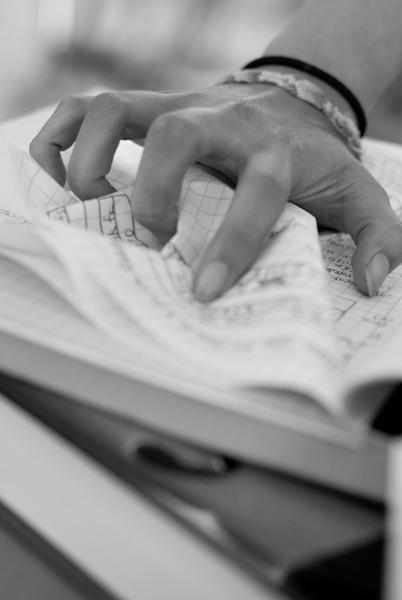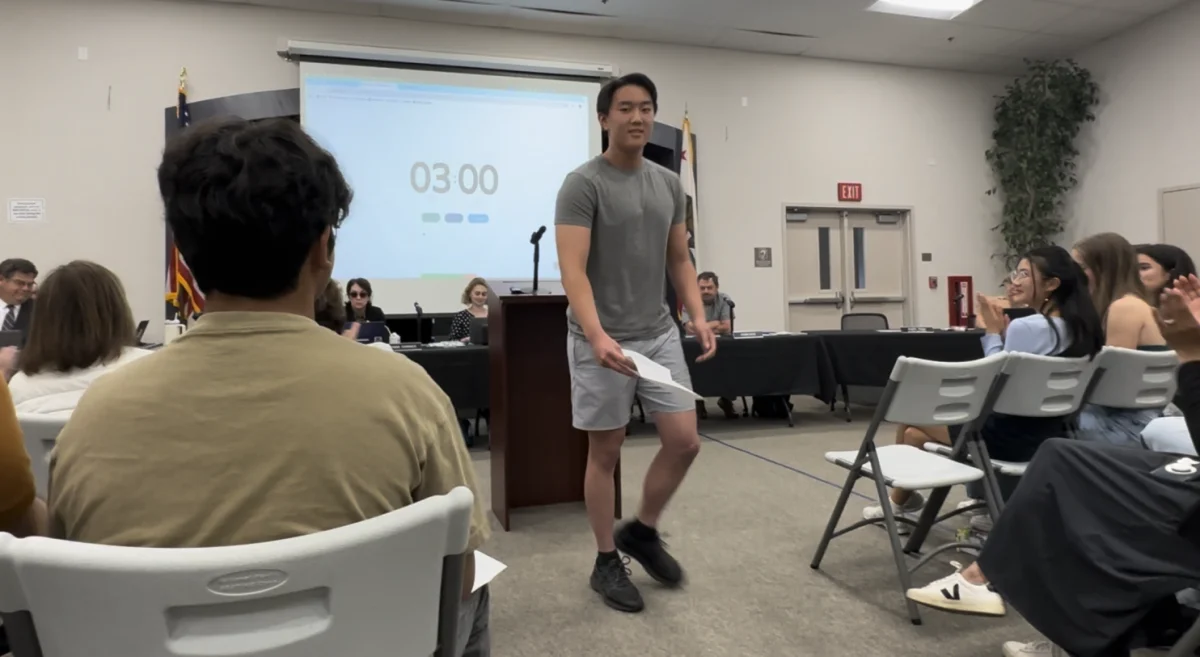Since the start of the school year, three teachers from the AP Science Department have transitioned from composition lab books to carbon copy lab books. These new lab books are designed to leave carbon copies of all lab work students perform as a record. While these new lab books do have benefits, there are too many drawbacks to make them effective.
“This year [AP Environmental Science teacher Greg] Stoehr, [AP Biology teacher Meghan] Shuff and I decided to use the [new] lab books,” AP Physics B teacher Karen Davis said. “We could then get them graded faster and more easily.”
Teachers receive the carbon copies of each student’s labs instead of collecting lab books. This also allows students to conduct labs while teachers are still in the process of grading.
“A big reason for [the transition] was so students can have a copy of their work for reasons that if [teachers] were still grading [the lab books] and couldn’t get them back their feedback, they would still have their data if we were doing a followup lab,” Shuff said. “For teachers, [the carbon copy lab book] is really nice because I’m not taking home stacks of lab books.”
However, these new lab books prove to be a double-edged sword as they shift the burden from the teachers toward the students. With these carbon copy lab books comes a myriad of potential mistakes.
One of the many practices associated with these carbon copy lab books is the need to have a cardboard sheet to prevent multiple copies. This problem grows exponentially when a student goes back to edit an error and forgets to switch the cardboard, often ruining upward of five sheets of paper.
“It’s extremely difficult to work with those carbon copy books,” AP Physics B student senior Adron Mason said. “They’re not very forgiving of mistakes. You can mess up a whole bunch of pieces of paper if you forget to put the cardboard sheet behind a single piece.”
Students must often spend hours drafting up their work before copying it in these lab books in order to prevent errors. This is due to the inability to erase or white-out mistakes on the carbon copy. Although teachers allow students to cross out errors, it is frustrating to cross out an entire graph or data table because of a small error.
“When you’re working on a piece of technology with no function for erasing, after a while it gets pretty rough,” Adron said.
Because carbon copy notebooks are meant to be a written archive, it presents a problem when working with technology. According to the Swarthmore College Biology Department, “these notebooks encourage bad notebook procedures and should be avoided. A proper notebook has a lot of glued-in information (printed graphs, datasheet templates, photographs, product labels, etc.) that simply will not show up on the sheet below.”
Since writing in the lab book is cumbersome, students often record data during the lab on loose sheets of paper which are easy to lose. Then after drafting up a lab multiple times, the work done within the carbon copy still may not be on par with what teachers expect.
“Students have found that if they’re using pen rather than pencil, it’s been difficult for them to write through [the] pages,” Shuff said. “And you have to use pen while working in the lab.”
Because carbon copy paper does not perfectly transfer the work from the original piece, teachers may find it difficult to read the light gray copied work.
“It’s the yellow copy which goes to the teacher … which is sometimes more smudged or just not as clear as the white copy,” Shuff said. “So I wish it was reversed.”
With all these potential mistakes, the chances of ruining a student’s carbon copy lab book is much greater than that of the old composition lab books. As a result, students must spend more time taking precautions against potential errors as well as correcting the aforementioned mistakes.
“The entire process feels really, really tedious sometimes,” AP Physics B student junior Jerry Liu said. “I think that these lab books are cool, but composition lab books are a lot more practical.”
In addition to being time consuming, these mistakes may also cost the student excess amounts of money. Unlike the old composition lab books, which cost less than a dollar during school supply sales, these new carbon copy lab books cost upward of $15.
“It’s expensive and not necessary for high school use, especially AP Physics B. The labs we do don’t warrant professional notebooks,” Jerry said. “I think we should focus on doing more challenging material inside the labs instead of focusing on gimmicky features.”
Just like regular composition lab books, these carbon copy lab books have 100 sheets per book; however, students are only able to write on one side of each sheet, halving the amount of usable pages. Coupled with the original price and the potential to ruin each sheet, these lab books snowball in cost.
“Though $15 is kind of annoying to pay for [the carbon copy] lab books, you have to pay for your resources,” AP Biology student senior Shaban Rexha said. “The price is not bothering me so much as I have to pay for something … that is not super effective, in my opinion.”
Though these new lab books are more elaborate by nature, they do not necessarily improve student work. While carbon copy lab books allow teachers to begin consecutive labs, it does not guarantee students faster access to feedback on their labs.
“I can’t say they seem like a useless expense, because they recognize their use to the teachers, but they seem like an unfair expense and they seem like the wrong solution to the problem,” Adron said.
Carbon copy lab books are not the only option. The Science Department should consider alternatives before implementing a long-term solution.
“Instead of doing the carbon copy thing, which is not a bad idea, my plan is to rework the way I grade lab books to give you immediate feedback during the lab day,” AP Physics C teacher Adam Randall said. “Everybody makes mistakes in different areas … as soon as I see [a student] making a mistake I can then engage the student to correct their deficiency so that they can move forward.”
Though only a suggestion, Randall’s plan would avoid collecting lab books altogether in favor of real time help and assessment.
“I applaud the Science Department and the administration for trying to explore more efficient, easier ways for teachers to grade student’s work, but I don’t think this is the right way to go about it,” Adron said. “I encourage them to explore other more … sensible options.”
Instead of using the carbon copy lab books which shift the burden from the teachers to students, the department might want to consider Randall’s suggestion to help and assess students in real time or other alternatives in order to benefit both students and teachers.









